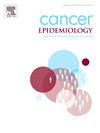Trends of all-cause, melanoma-specific, and cardiovascular mortality in melanoma patients from 2005 to 2020
IF 2.3
3区 医学
Q3 ONCOLOGY
引用次数: 0
Abstract
Background
Recent advances in melanoma treatment, including immunotherapy and targeted therapy, have significantly improved survival among melanoma patients after 2010. However, these changes may have influenced mortality trends, including those related to cardiovascular (CV) events.
Objective
In this study, we assess mortality trends including CV mortality in melanoma patients.
Methods
Using data from the Surveillance, Epidemiology, and End Results (SEER) 17 registry, we examined melanoma incidence and CV, melanoma-specific, and all-cause mortalities from 2005 to 2020. We utilized Joinpoint software to estimate the annual percentage change (APC).
Results
Our study included 299,993 melanoma patients (173,889 males; 126,104 females). The incidence of melanoma increased by 0.6 % annually (95 % CI: 0.3–1.5, p < 0.05) from 2005 to 2019, followed by a 6.3 % decrease (95 % CI: −9.9 to −0.7, p < 0.05) in 2020. All-cause mortality increased annually by 8.3 % (95 % CI: 6.7–11.3, p < 0.05) from 2005 to 2010, then by 3.3 % (95 % CI: 2.8–3.7, p < 0.05) after 2010. Melanoma-specific mortality increased by 2.0 % annually (95 % CI: 0.8–3.5, p < 0.05) from 2005 until 2013, after which it declined by 5.1 % (95 % CI: −7.3 to −3.8, p < 0.05). CV mortality increased by 7.1 % annually (95 % CI: 4.6–9.4, p < 0.05) from 2005 to 2020. Trends were similar across sexes, with a non-significant higher APC in CV mortality noted among females from 2017 to 2020.
Conclusions
Our study shows despite the significant decrease in all-cause and melanoma-specific mortalities after 2010, likely reflecting the benefits of modern therapies, CV mortality continued to rise. These findings underscore the need for long-term surveillance and CV risk management in melanoma patients.
2005年至2020年黑色素瘤患者全因死亡率、黑色素瘤特异性死亡率和心血管死亡率趋势
2010年后,包括免疫治疗和靶向治疗在内的黑色素瘤治疗的最新进展显著提高了黑色素瘤患者的生存率。然而,这些变化可能影响了死亡率趋势,包括与心血管事件相关的死亡率趋势。目的在本研究中,我们评估黑色素瘤患者的死亡率趋势,包括CV死亡率。方法使用来自监测、流行病学和最终结果(SEER) 17登记处的数据,研究2005年至2020年黑色素瘤发病率和CV、黑色素瘤特异性和全因死亡率。我们使用Joinpoint软件来估计年度百分比变化(APC)。结果本研究纳入299993例黑色素瘤患者(173889例男性;126104女性)。从2005年到2019年,黑色素瘤的发病率每年增加0.6 %(95 % CI: 0.3-1.5, p <; 0.05),随后在2020年下降6.3 %(95 % CI:−9.9至−0.7,p <; 0.05)。从2005年到2010年,全因死亡率每年增加8.3 %(95 % CI: 6.7-11.3, p <; 0.05),然后在2010年后增加3.3 %(95 % CI: 2.8-3.7, p <; 0.05)。从2005年到2013年,黑色素瘤特异性死亡率每年增加2.0 %(95 % CI: 0.8-3.5, p <; 0.05),之后下降5.1 %(95 % CI:−7.3至−3.8,p <; 0.05)。从2005年到2020年,CV死亡率每年增加7.1 %(95 % CI: 4.6-9.4, p <; 0.05)。不同性别的趋势相似,从2017年到2020年,女性CV死亡率的APC没有显著升高。我们的研究显示,尽管2010年后全因和黑色素瘤特异性死亡率显著下降,可能反映了现代治疗的益处,但CV死亡率继续上升。这些发现强调了对黑色素瘤患者进行长期监测和心血管风险管理的必要性。
本文章由计算机程序翻译,如有差异,请以英文原文为准。
求助全文
约1分钟内获得全文
求助全文
来源期刊

Cancer Epidemiology
医学-肿瘤学
CiteScore
4.50
自引率
3.80%
发文量
200
审稿时长
39 days
期刊介绍:
Cancer Epidemiology is dedicated to increasing understanding about cancer causes, prevention and control. The scope of the journal embraces all aspects of cancer epidemiology including:
• Descriptive epidemiology
• Studies of risk factors for disease initiation, development and prognosis
• Screening and early detection
• Prevention and control
• Methodological issues
The journal publishes original research articles (full length and short reports), systematic reviews and meta-analyses, editorials, commentaries and letters to the editor commenting on previously published research.
 求助内容:
求助内容: 应助结果提醒方式:
应助结果提醒方式:


